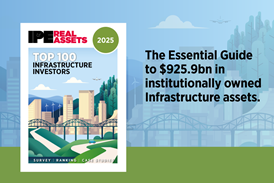The European real estate debt funding gap (DFG) grew to €51 bn in the final quarter of 2022, due to a combination of capital value decreases which have resulted in higher loan to values (LTV) and higher interest rates pushing down interest coverage ratios (ICR), according to AEW’s latest European lending report.

‘Our analysis shows the European DFG grew to €51 bn in the final quarter of 2022, reflecting lower collateral values and interest coverage ratio restrictions which are starting to take hold,’ commented Hans Vrensen, head of Research & Strategy at AEW. ‘Taking the estimated LTV-related DFG, this number has increased by 33% to €32 bn since our last analysis in September 2022, driven by capital value declines coming through much more quickly than previously anticipated.’
The DFG is the shortfall between the original amount of secured debt originated in 2018-20 and the amount available for refinance at the loan maturity in the next three years across all sectors in Germany, the UK and France.
Concerns on upcoming refinancings are triggered by all-in interest rates, which doubled in 2022 and reached 6.3% for the UK and 4.0% for Europe by year-end 2022. The impact of a prolonged period of higher interest rates must therefore now be factored in, AEW said.
The disruptive impact of these rate increases is shown by ICRs for legacy loans due to refinance in 2023 halving to 1.6 from their 10-year average of 3.25 across all sectors. This is unlikely to be either commercially appealing or acceptable from a regulatory and capital reserve perspective, especially for bank lenders.
According to the asset manager, lenders and borrowers will need to be creative in restructuring the capital stack to bridge the widened funding gap and reach sustainable LTV and ICR levels. This will require more than the usual maturity extensions, covenant waivers, cash traps and/or partial restructuring of existing loans before they can be refinanced, especially with hedging requirements.
Vrensen: ‘Lenders and borrowers will need to adopt a far more proactive approach as the market is faced with a different set of challenges than during the GFC in respect to inflation, higher interest rates and new regulations. The regulatory requirement for banks to hedge loans could be the trigger the market needs to bridge the mounting bid-ask spread in the current downcycle. This is likely to force a quicker work-out of upcoming loan maturities compared to the GFC, since extending maturing loans without fixing the rate at higher swap rates is unlikely to be an option this time around.’










